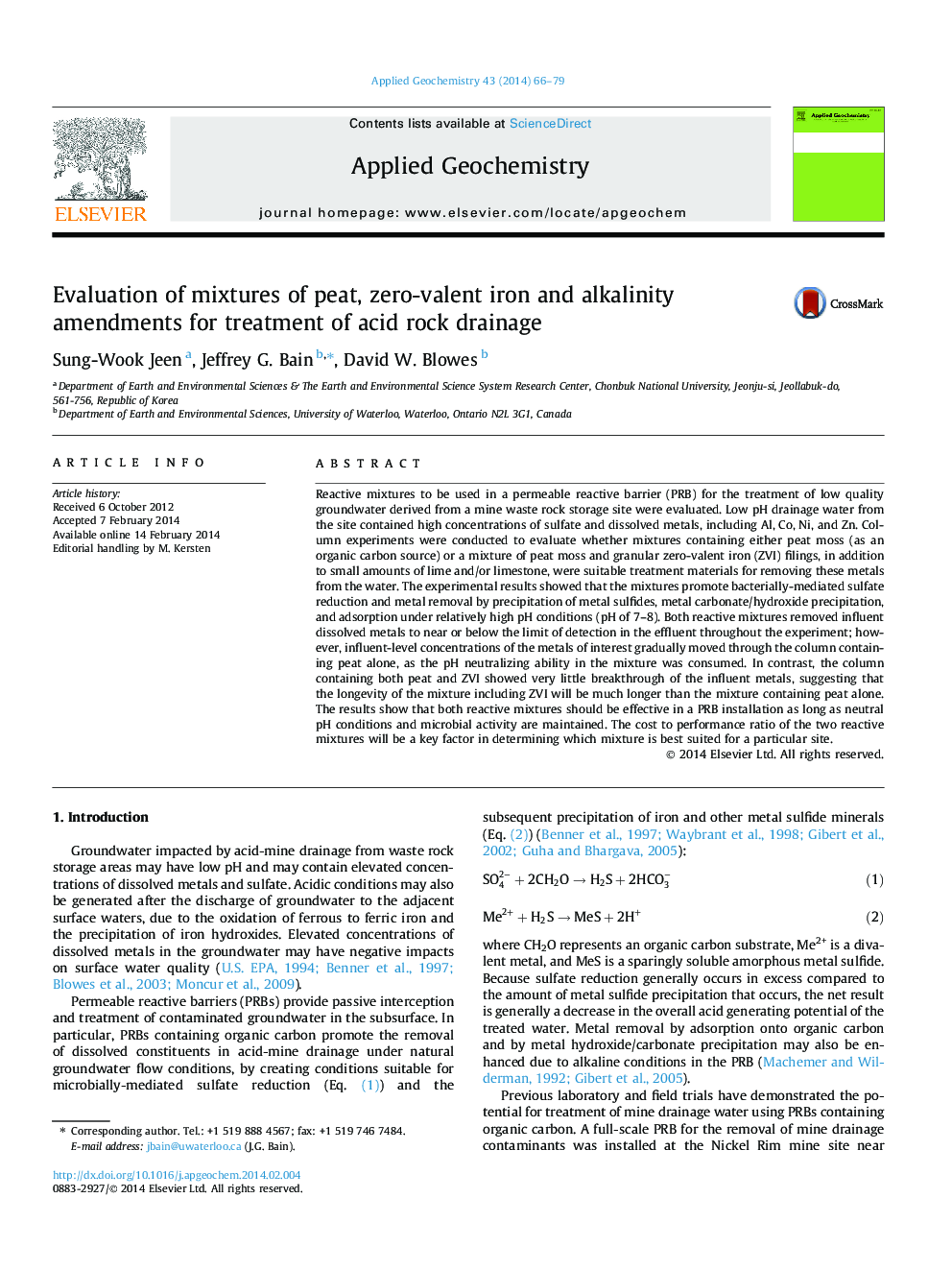| کد مقاله | کد نشریه | سال انتشار | مقاله انگلیسی | نسخه تمام متن |
|---|---|---|---|---|
| 4435820 | 1620248 | 2014 | 14 صفحه PDF | دانلود رایگان |
• Peat and limestone with and without ZVI supported sulfate reduction in mine water.
• Sulfate reduction was strong and longer lasting in the mixture with peat and ZVI.
• Metal removal in the peat column depended primarily on availability of limestone.
• ZVI is the key component for prolonged metal removal in the peat + ZVI column.
• Metals are removed by metal sulfide/carbonate/hydroxide formation and adsorption.
Reactive mixtures to be used in a permeable reactive barrier (PRB) for the treatment of low quality groundwater derived from a mine waste rock storage site were evaluated. Low pH drainage water from the site contained high concentrations of sulfate and dissolved metals, including Al, Co, Ni, and Zn. Column experiments were conducted to evaluate whether mixtures containing either peat moss (as an organic carbon source) or a mixture of peat moss and granular zero-valent iron (ZVI) filings, in addition to small amounts of lime and/or limestone, were suitable treatment materials for removing these metals from the water. The experimental results showed that the mixtures promote bacterially-mediated sulfate reduction and metal removal by precipitation of metal sulfides, metal carbonate/hydroxide precipitation, and adsorption under relatively high pH conditions (pH of 7–8). Both reactive mixtures removed influent dissolved metals to near or below the limit of detection in the effluent throughout the experiment; however, influent-level concentrations of the metals of interest gradually moved through the column containing peat alone, as the pH neutralizing ability in the mixture was consumed. In contrast, the column containing both peat and ZVI showed very little breakthrough of the influent metals, suggesting that the longevity of the mixture including ZVI will be much longer than the mixture containing peat alone. The results show that both reactive mixtures should be effective in a PRB installation as long as neutral pH conditions and microbial activity are maintained. The cost to performance ratio of the two reactive mixtures will be a key factor in determining which mixture is best suited for a particular site.
Figure optionsDownload as PowerPoint slide
Journal: Applied Geochemistry - Volume 43, April 2014, Pages 66–79
